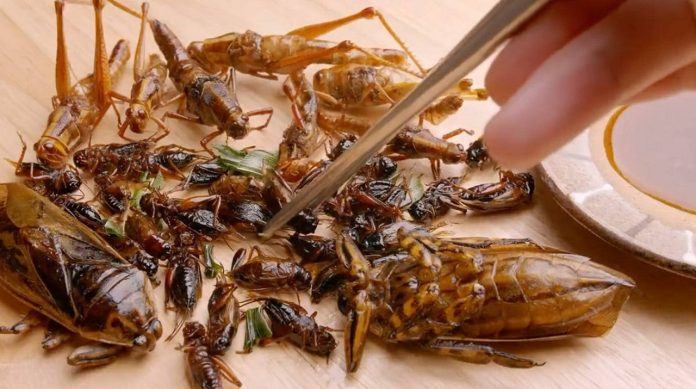
More than 2 billion people worldwide regularly eat insects.
For many, bugs are a common part of their diet and even considered delicacies in certain regions.
In contrast, the idea of eating bugs in Western countries is still met with hesitation.
However, experts believe that the practice of eating insects, known as entomophagy, could become more common in places like the United States in the future.
To understand why more people should consider adding bugs to their diet, UCR Magazine spoke with Erin Wilson-Rankin, a professor of entomology at the University of California, Riverside.
She teaches a course about the history of insects and their importance in different cultures, including why many people around the world eat them.
Why Eating Insects Isn’t Weird
Wilson-Rankin emphasizes that eating insects isn’t strange at all. “There are 8 billion people on the planet, and over 2 billion of them eat insects regularly,” she says.
“That’s a significant portion of the global population.”
In many cultures, especially in regions near the equator, insects are a primary source of protein. Beetles are the most commonly consumed bugs worldwide, followed by butterflies and moths.
People tend to eat the larvae or pupae stages of these insects because they are soft and rich in protein. In sub-Saharan Africa, caterpillars are very popular, while in Latin America, ants, wasps, and bees are common.
For example, in Colombia, roasted ants are eaten, and in Mexico, ant larvae are often mixed into foods like burritos.
The benefits of eating bugs
One of the biggest advantages of eating insects is that raising them is much more sustainable than farming animals like chickens or cows.
“Insects don’t impact the environment the way traditional livestock does,” explains Wilson-Rankin. “It takes far fewer resources to raise bugs, and they produce fewer greenhouse gases.”
For example, if you feed 100 pounds of grass to cattle, you’ll get about 3 pounds of beef. However, with the same amount of grass, you could produce 35 pounds of caterpillars.
Insects like grasshoppers, crickets, and locusts are especially high in protein, and they also contain essential nutrients like antioxidants, anti-inflammatory compounds, amino acids, and fiber.
Are there risks to eating bugs?
While some people worry that eating insects might carry health risks, such as bacteria or toxins, Wilson-Rankin explains that this is not usually a problem.
“Viruses that cause foodborne illnesses don’t typically replicate in insects,” she says.
“Of course, insects could become contaminated during processing or distribution, but that’s the case with any food. Just like you wash vegetables or cook meat, you can prepare bugs in ways that eliminate any potential pathogens.”
Insects also don’t generally accumulate toxins, with a few exceptions like monarch caterpillars that feed on toxic milkweed. As long as you avoid those rare cases, most edible insects are perfectly safe to eat.
Insects are already in your food
You may not realize it, but if you live in the U.S., you’re already eating bugs without knowing it. “It’s estimated that the average American consumes about 2 pounds of insect parts every year,” says Wilson-Rankin.
The Food and Drug Administration (FDA) sets acceptable levels for insect parts in food. For example, chocolate can contain up to 60 insect fragments per 100 grams, and beer can have over 2,500 aphids per 10 grams of hops.
“Insects in food are mostly an aesthetic problem,” says Wilson-Rankin. “They don’t pose a health risk.”
Changing the Perception of Insect Eating
So, why aren’t more people in Western countries eating bugs? Wilson-Rankin believes it’s a cultural issue. “There’s a stereotype in our culture that eating insects is gross,” she says. However, she points out that some foods we now consider delicacies, like lobster, were once seen as undesirable. “Lobsters were once considered ‘cockroaches of the sea,’ and people used to protest being fed too much lobster. But then lobster was rebranded, and now it’s a luxury food.”
A similar rebranding could help insects gain acceptance in Western countries. In fact, some high-end chefs are already incorporating bugs into their dishes. Celebrity chef Joseph Yoon is known for his insect-based recipes, and even Michelin-starred restaurants are getting in on the trend.
Ultimately, Wilson-Rankin believes that the environmental and nutritional benefits of eating insects will help drive the change. “It’s a sustainable way to feed people and could play a key role in ensuring global food security in the future,” she says.
With the right rebranding, entomophagy could soon be a common and accepted practice in Western diets.
If you care about nutrition, please read studies about the harm of vitamin D deficiency, and Mediterranean diet may preserve brain volume in older adults.
For more health information, please see recent studies about foods to naturally lower high blood pressure, and a simple breakfast switch can help control type 2 diabetes.
Source: University of California.



